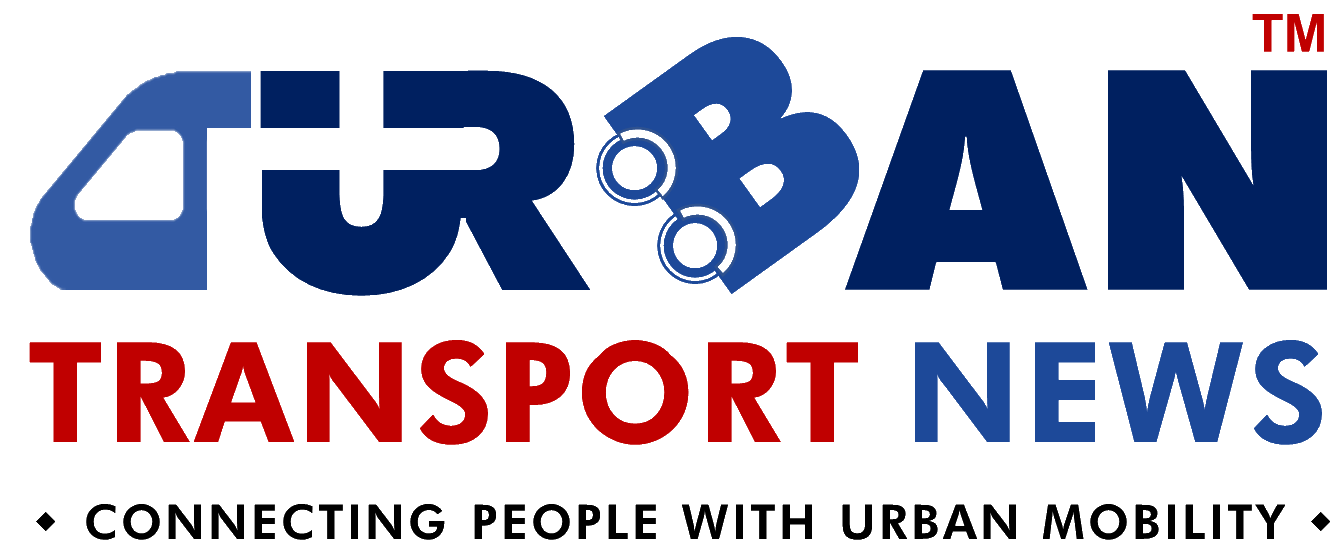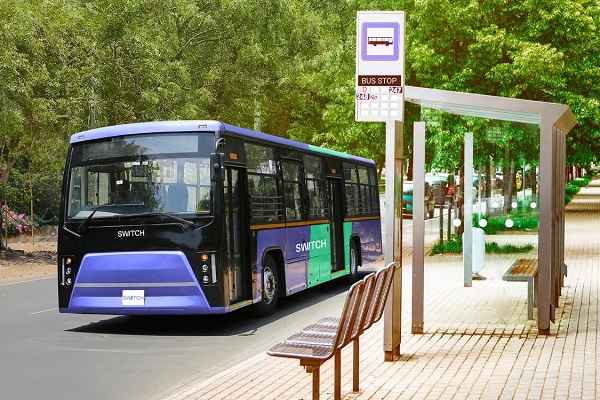 Delhi unveils ambitious Urban Mobility Vision: Luxury Metro Coaches, New Tunnels and Pod Taxi
Delhi unveils ambitious Urban Mobility Vision: Luxury Metro Coaches, New Tunnels and Pod Taxi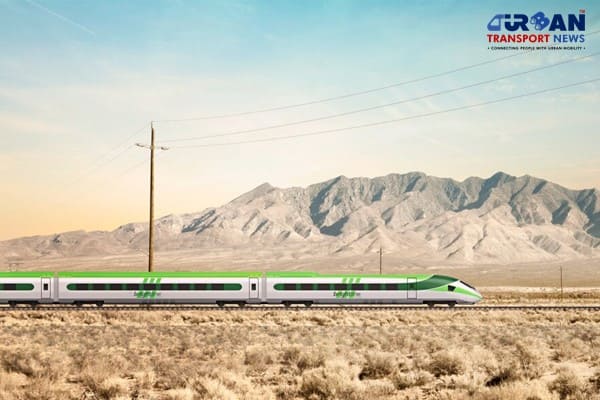 Qatar approves Saudi Rail Link Agreement, Accelerating Gulf Railway Vision 2030
Qatar approves Saudi Rail Link Agreement, Accelerating Gulf Railway Vision 2030 UP Govt plans to introduce Water Metro services in Ayodhya, Varanasi & Prayagraj
UP Govt plans to introduce Water Metro services in Ayodhya, Varanasi & Prayagraj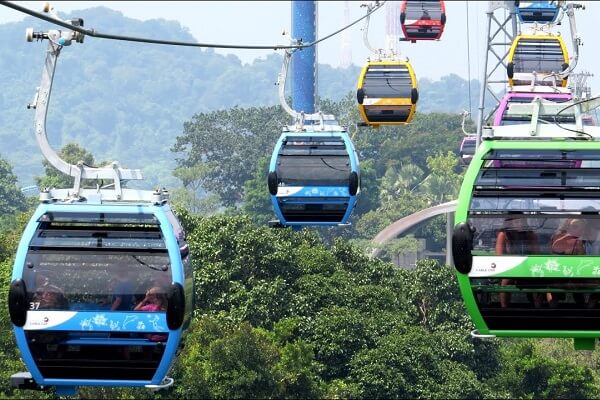 India’s First Urban Ropeway begins Trial Run in Varanasi, Set to carry 1 Lakh passengers daily
India’s First Urban Ropeway begins Trial Run in Varanasi, Set to carry 1 Lakh passengers daily India and Bhutan to Build First-Ever Rail Link: ₹4,033 Cr Project to Boost Regional Connectivity
India and Bhutan to Build First-Ever Rail Link: ₹4,033 Cr Project to Boost Regional Connectivity Patna to launch Eco-Friendly Water Metro; Trial Run soon between Digha and Kangan Ghats
Patna to launch Eco-Friendly Water Metro; Trial Run soon between Digha and Kangan Ghats Air India Group set to launch Flights Operations from Navi Mumbai International Airport
Air India Group set to launch Flights Operations from Navi Mumbai International Airport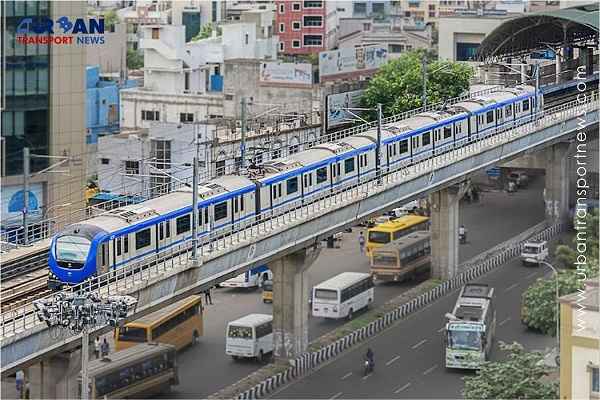 Chennai to launch 25-Year Mobility Plan with Unified QR Ticketing and One-App Transit System
Chennai to launch 25-Year Mobility Plan with Unified QR Ticketing and One-App Transit System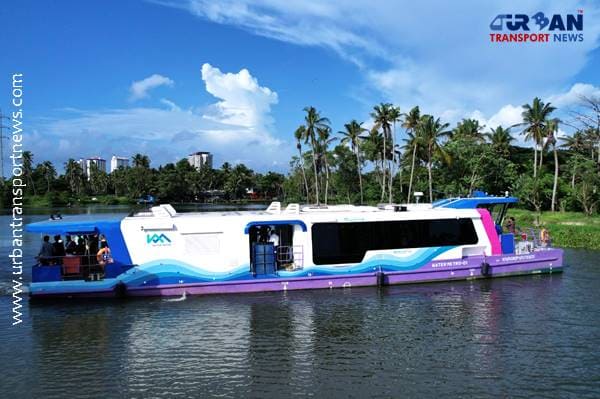 Kochi Metro bags ₹4.4 crore contract to prepare DPR for Mumbai Water Metro Proejct
Kochi Metro bags ₹4.4 crore contract to prepare DPR for Mumbai Water Metro Proejct Navi Mumbai International Airport set for September launch; IndiGo and Akasa Air to lead Operations
Navi Mumbai International Airport set for September launch; IndiGo and Akasa Air to lead Operations
Fostering Gender Inclusivity in Urban Mobility and Public Transport

In the dynamic landscape of urban development, the quest for progress extends beyond the physical infrastructure of cities. As metropolises evolve, it becomes imperative to ensure that the benefits of urbanization are equitably distributed, with a keen focus on inclusivity. Among the critical facets of urban life, the accessibility and safety of public transportation are paramount. This article delves into the nuanced realm of fostering gender inclusivity in urban mobility and public transport, presenting a tailored framework designed to address disparities and champion equality across various modes of transportation, including Metro, Mass Rapid Transit Systems (MRTS), railways, and buses. Urbanization, while bringing about unprecedented conveniences and opportunities, has also underscored the pressing need to create transportation systems that cater to the diverse needs of the population. Women, in particular, often encounter unique challenges and vulnerabilities in the realm of urban mobility. From safety concerns to limited access and inadequate facilities, there exists a multifaceted set of issues that demand thoughtful consideration and strategic intervention.
The purpose of this framework is to not only acknowledge these existing disparities but to actively engage in a transformative process that promotes gender inclusivity as an integral component of urban progress. By scrutinizing the specific challenges faced by women in public transport and proposing targeted solutions, we endeavor to contribute to the creation of transportation systems that are safe, accessible, and equitable for everyone. As we embark on this exploration, we aim to unravel the intricacies of gender disparities in urban mobility and to present a comprehensive framework that extends beyond conventional solutions. Through strategic planning, collaboration with stakeholders, and a commitment to continuous improvement, we envision a future where public transportation becomes a catalyst for social equity, reflecting the values of an inclusive and progressive urban society.
Challenges
Despite the evolving landscape of urban development, significant challenges persist in fostering gender inclusivity in urban mobility and public transport. These challenges underscore the need for a tailored framework that addresses specific disparities. Understanding and navigating these hurdles is essential for developing effective strategies to promote equality. Here are some key challenges:
- Safety Concerns: Safety remains a paramount concern for women utilizing public transportation. Incidents of harassment, assault, and intimidation contribute to a pervasive sense of vulnerability. Creating a transportation environment where women feel secure is a multifaceted challenge that requires coordinated efforts from various stakeholders.
- Limited Access to Transportation Hubs: Women often face barriers in accessing transportation hubs, which can impact their overall mobility. Inadequate infrastructure, such as poorly designed entrances or insufficient signage, can disproportionately affect women's ability to utilize public transport effectively.
- Inadequate Lighting and Security Measures: Poorly lit transportation hubs and vehicles contribute to an environment where safety is compromised. The lack of comprehensive security measures, including surveillance systems and visible personnel, can deter women from using public transportation, particularly during evening hours.
- Unreliable and Infrequent Services: Irregular and infrequent public transport services can disproportionately impact women who may have caregiving responsibilities or specific time constraints. Reliability in scheduling and increased frequency can enhance the overall accessibility of public transport for women.
- Lack of Gender-Specific Facilities: The absence of gender-specific facilities, such as restrooms and waiting areas, can be a significant obstacle. Women often encounter challenges in finding clean, safe, and private facilities, discouraging their use of public transportation.
- Cultural and Social Norms: Deep-rooted cultural and social norms can perpetuate gender stereotypes and contribute to an environment where women may feel unwelcome or judged when using public transport. Addressing these norms requires a combination of awareness campaigns and community engagement.
- Limited Representation in Decision-Making: The absence of gender diversity in decision-making bodies related to urban transportation planning can lead to oversight in addressing the unique needs of women. Ensuring diverse representation is crucial for crafting inclusive policies and strategies.
- Affordability and Economic Constraints: Economic factors can disproportionately affect women's access to public transport. Affordability, especially for low-income women, must be considered in the framework to ensure that financial constraints do not hinder their ability to use public transportation.
Acknowledging these challenges is the first step toward creating a comprehensive framework that tackles gender disparities in urban mobility. The subsequent sections will delve into specific strategies and initiatives that form part of the proposed framework, aiming to overcome these challenges and foster a more inclusive and equitable urban transportation system.
Gender-Inclusive Mobility & Public Transport Framework
This meticulously designed framework is tailored to confront the specific challenges associated with fostering gender inclusivity in urban mobility and public transport. Comprising a series of strategic initiatives, policies, and collaborative efforts, the framework is aimed at establishing a transportation ecosystem that prioritizes safety, accessibility, and equity for individuals of all genders. The core components of the framework encompass:
Consolidated Gender-Based Data
- Data Collection and Analysis: Institute a comprehensive system for gathering and analyzing gender-disaggregated data related to public transport usage, encompassing ridership patterns, preferences, and the unique challenges faced by different genders.
- Regular Reporting: Implement a routine reporting mechanism to continually update and disseminate gender-based data to pertinent stakeholders, fostering transparency and supporting informed decision-making in urban mobility planning.
Inclusive & Safe Public Transport System:
- Safety Audits and Infrastructure Enhancement: Conduct regular safety audits of public transport infrastructure, addressing vulnerabilities and improving safety measures, including well-lit spaces, visible security personnel, and emergency response mechanisms.
- Awareness Campaigns: Launch public awareness campaigns to cultivate a culture of respect and inclusivity within public transport. These campaigns should educate passengers on appropriate behaviour, reporting mechanisms, and the significance of creating a secure environment for everyone.
Multiple First/Last Mile Connectivity Options:
- Diverse Transportation Modes: Develop and promote various first/last mile connectivity options, including bike-sharing programs, pedestrian-friendly pathways, and partnerships with ride-sharing services. This ensures convenient and accessible options for individuals of all genders to reach and depart from transport hubs.
- Integration with Public Transport: Seamlessly integrate first/last mile connectivity options with public transport services, encouraging a multimodal approach to urban mobility that accommodates diverse commuting needs.
Hiring Women in the Public Transport Sector:
- Equal Employment Opportunities: Implement policies and initiatives to guarantee equal employment opportunities for women in the public transport sector. This involves addressing gender biases, providing training and mentorship programs, and actively recruiting women for various roles within transportation agencies.
- Diverse Representation: Strive for diverse representation of women in positions ranging from drivers and conductors to managerial and leadership roles, fostering an inclusive and balanced workforce.
Sexual Harassment Committees:
- Establishment of Committees: Mandate the creation of Sexual Harassment Committees within public transport agencies, equipped to handle complaints, conduct investigations, and provide a safe space for individuals to report incidents of harassment.
- Training Programs: Conduct regular training programs for public transport personnel on preventing and addressing sexual harassment. This includes sensitization training, communication skills, and the promotion of a culture of zero tolerance for harassment.
By implementing this comprehensive framework, cities can progress towards establishing a gender-inclusive, safe, and accessible public transport system that caters to the diverse needs of all commuters. Regular monitoring, feedback mechanisms, and adjustments to policies based on evolving data are indispensable for the ongoing success of this framework.
Implementation Action Points
This meticulously designed framework is tailored to confront the specific challenges associated with fostering gender inclusivity in urban mobility and public transport. Comprising a series of strategic initiatives, policies, and collaborative efforts, the framework is aimed at establishing a transportation ecosystem that prioritizes safety, accessibility, and equity for individuals of all genders.
Understanding the Gender Disparities in Urban Mobility:
- Conduct Gender Impact Assessment: Initiate a comprehensive gender impact assessment in collaboration with urban planners, transportation authorities, and gender experts to identify existing disparities in urban mobility.
- Surveys and Focus Groups: Conduct surveys and engage in focus group discussions with diverse communities to gather qualitative insights into the specific challenges faced by women in urban mobility.
- Data Collection and Analysis: Collect and analyze data on the usage patterns of public transport, considering gender-specific factors, to inform evidence-based decision-making.
Safety Measures and Lighting:
- Enhanced Surveillance: Implement and upgrade surveillance systems in transportation hubs, vehicles, and critical areas to enhance passenger safety.
- Community Policing: Collaborate with local law enforcement agencies to establish community policing initiatives, fostering a sense of security and deterrence against harassment.
- Well-Lit Infrastructure: Improve lighting in and around transportation hubs, bus stops, and walkways to create a safer environment, particularly during evenings.
Gender-Specific Facilities:
- Facility Design Guidelines: Develop and implement design guidelines for gender-specific facilities, including restrooms and waiting areas, ensuring safety, cleanliness, and accessibility.
- Public Consultation: Involve women and the community in the design process through public consultations to understand preferences and ensure inclusivity.
Inclusive Transportation Planning:
- Gender-Responsive Urban Planning: Integrate gender-responsive considerations into urban transportation planning, addressing the needs of women in route optimization, infrastructure design, and accessibility.
- Stakeholder Workshops: Conduct workshops with urban planners, architects, and transportation authorities to raise awareness and provide training on gender-inclusive planning.
Public Awareness and Education:
- Media Campaigns: Launch multimedia campaigns to raise public awareness of the importance of gender inclusivity, respectful behaviour, and reporting mechanisms for harassment.
- School and College Programs: Implement educational programs in schools and colleges to instill a culture of respect and gender sensitivity from an early age.
Collaboration with Stakeholders:
- Stakeholder Forums: Establish regular forums bringing together government agencies, transportation authorities, advocacy groups, and community representatives to foster collaboration and information exchange.
- Public-Private Partnerships: Encourage public-private partnerships to fund and implement initiatives that enhance gender inclusivity in urban mobility.
Continuous Monitoring and Evaluation:
- Performance Metrics: Define key performance indicators (KPIs) related to gender inclusivity and safety in public transport, including ridership demographics, reported incidents, and user satisfaction.
- Regular Audits: Conduct regular audits and evaluations of implemented measures, seeking feedback from users and stakeholders, and adjusting strategies accordingly.
Future Solutions
As we chart a course towards fostering gender inclusivity in urban mobility and public transport, it is essential to envision future solutions that can further enhance the effectiveness of the tailored framework. The evolving nature of urban landscapes and societal expectations requires an adaptive approach to address emerging challenges and capitalize on new opportunities. Here are key future solutions to fortify the commitment to promoting equality in Metro, MRTS, railways, and buses:
- Integration of Smart Technologies: Embrace smart technologies such as real-time tracking, intelligent transportation systems, and mobile applications that enhance the safety and convenience of public transport. These technologies can provide users, especially women, with real-time information, emergency services, and secure navigation options.
- Innovative Infrastructure Design: Collaborate with architects and urban planners to design innovative and inclusive transportation infrastructure. This involves incorporating principles of universal design, prioritizing accessibility, and creating spaces that are welcoming to individuals of all genders and abilities.
- Data-Driven Decision-Making: Leverage data analytics and machine learning to derive actionable insights from user behaviour, safety incidents, and ridership patterns. Data-driven decision-making can enable the continuous refinement of the framework, ensuring that interventions are targeted and responsive to evolving needs.
- Participatory Design Initiatives: Expand participatory design initiatives to involve diverse communities in the co-creation of public spaces and transportation systems. Engaging women, LGBTQ+ individuals, and marginalized communities in the design process ensures that their perspectives are integrated, leading to solutions that better meet their unique requirements.
- E-Mobility and Sustainable Transport: Encourage the adoption of e-mobility solutions, such as electric buses and bike-sharing programs, to promote sustainable and eco-friendly transportation. These initiatives not only contribute to environmental goals but also enhance the inclusivity and accessibility of transport options.
- Diversity in Leadership Roles: Advocate for increased representation of women in leadership roles within transportation authorities, urban planning departments, and related decision-making bodies. Diverse leadership fosters a more nuanced understanding of gender-specific challenges and leads to policies that better address the needs of all commuters.
- Public-Private Collaboration for Innovation: Foster increased collaboration between public and private sectors to spur innovation in urban mobility. Public-private partnerships can bring in resources, expertise, and innovative solutions that may not be achievable through traditional approaches alone.
- Global Best Practices Exchange: Establish platforms for the exchange of global best practices in gender-inclusive urban mobility. Learning from successful initiatives implemented in different parts of the world can inspire new ideas and approaches that are adaptable to local contexts.
- Accessibility for Persons with Disabilities: Integrate considerations for persons with disabilities into the framework, ensuring that public transport is universally accessible. This involves implementing features such as tactile paths, auditory signals, and user-friendly interfaces that benefit individuals with diverse abilities.
- Crisis Response and Emergency Planning: Develop robust crisis response and emergency planning protocols that specifically address the safety and support needs of women during unforeseen events. This proactive approach ensures a rapid and coordinated response to incidents that may impact the security of commuters.
By envisioning and actively pursuing these future solutions, cities can forge a path toward a more inclusive and equitable urban mobility landscape. The ongoing commitment to innovation, collaboration, and responsiveness to the evolving needs of diverse communities will be essential in realizing the vision of gender-inclusive urban transport systems.
Key Takeaways
- Holistic Approach to Gender Inclusivity: The tailored framework emphasizes a holistic approach to gender inclusivity in urban mobility, recognizing the multifaceted challenges faced by individuals of all genders. By addressing disparities comprehensively, cities can foster a transportation system that accommodates diverse needs.
- Safety as a Cornerstone: Safety emerges as a cornerstone in fostering gender inclusivity. Through enhanced surveillance, well-lit infrastructure, and community policing initiatives, the framework aims to create a secure environment for all commuters, particularly women, ensuring their freedom of movement without fear.
- Designing Gender-Specific Facilities: Gender-specific facilities, including restrooms and waiting areas, are integral components of the framework. By incorporating thoughtful design guidelines and engaging the community in the process, public spaces can become more welcoming, safe, and accommodating for individuals of all genders.
- Inclusive Transportation Planning for Future-Ready Cities: The framework advocates for inclusive transportation planning that considers the diverse needs of the population and integrates smart technologies, such as real-time tracking and predictive analytics. This approach positions cities to be future-ready, and adaptable to emerging challenges and opportunities in urban mobility.
- Public Awareness and Education as Catalysts for Change: Public awareness campaigns and educational initiatives play a pivotal role in fostering a culture of respect, discouraging harassment, and promoting shared responsibility among commuters. These awareness-building efforts serve as catalysts for societal change and contribute to the normalization of gender inclusivity.
- Collaboration and Stakeholder Engagement: Collaboration with stakeholders, including government agencies, transportation authorities, advocacy groups, and the community, is fundamental. The framework recognizes the importance of forging partnerships to implement and sustain gender-inclusive practices, reflecting a collective commitment to progress.
- Continuous Monitoring and Evaluation for Adaptive Solutions: The establishment of continuous monitoring and evaluation mechanisms ensures that the framework remains adaptive and responsive. Regular assessments, performance metrics, and user feedback contribute to the ongoing refinement of strategies, enabling cities to evolve in tandem with the changing needs of their inhabitants.
- Advancing Future Solutions for Sustainable Progress: Looking ahead, advancing future solutions, such as the integration of smart technologies, blockchain for secure transactions, and community-driven innovation hubs, can further propel urban mobility toward sustainable progress. Embracing innovation ensures that cities remain at the forefront of inclusivity, adaptability, and technological advancements.
- Global Collaboration and Knowledge Exchange: The need for global collaboration and knowledge exchange platforms is underscored. Cities can benefit from sharing successes, challenges, and innovations in fostering gender inclusivity, fostering a sense of interconnectedness and collective learning on an international scale.
- Empowering Urban Environments for All: Ultimately, the key takeaway is that fostering gender inclusivity in urban mobility is not just a matter of transportation; it is about empowering urban environments for all individuals. By implementing the tailored framework and embracing advancing future solutions, cities can create spaces where everyone, regardless of gender, can navigate with confidence, equality, and a sense of belonging.
Conclusion
In the pursuit of fostering gender inclusivity in urban mobility and public transport, the articulated framework stands as a beacon, guiding the way toward progress, equality, and a more harmonious urban future. As our exploration concludes, the complexity and nuances of the challenges faced by individuals of all genders in navigating urban spaces become apparent. Yet, through a deliberate and tailored approach, cities can metamorphose their transportation systems into bastions of inclusivity and accessibility. This framework, meticulously designed to address disparities and promote equality in Metro, MRTS, railways, and buses, underscores the fundamental importance of safety, design, awareness, collaboration, and adaptability. By prioritizing these elements, cities can forge an environment where women, LGBTQ+ individuals, and diverse communities not only feel welcome but empowered to move freely and confidently. Looking ahead, the integration of smart technologies, sustainable practices, and community-driven innovation becomes imperative for ensuring that urban mobility remains dynamic, responsive, and capable of meeting the evolving needs of its inhabitants. The call for global collaboration and knowledge exchange resonates, emphasizing the interconnectedness of cities worldwide in the pursuit of shared progress. In conclusion, fostering gender inclusivity in urban mobility transcends a mere transport-centric endeavour; it is a commitment to constructing cities that champion equality, respect, and dignity for all. Through the implementation of the tailored framework and a continuous adaptation to emerging challenges, we pave the way for urban environments where every individual, regardless of gender, can thrive, contribute, and partake in the rich tapestry of city life. The journey toward gender-inclusive urban mobility is a collective endeavour—one that transforms not just the way we move but the very essence of our cities and communities.
